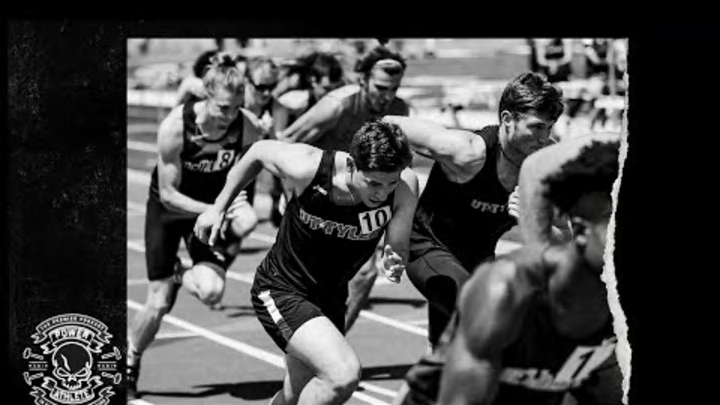The Grit and Grind of Mid-Distance Races: Why Mental Toughness Matters Most

Track and field offers a fascinating spectrum of athletic challenges, from explosive sprints to grueling long-distance events. On Power Athlete Radio, Clint Martin, UT Track Strength Coach, and I discussed what sets certain races apart - particularly the 800 meters, 5,000 meters, 10,000 meters, and steeplechase. These races demand a unique blend of mental toughness and physical endurance that go beyond the raw speed required in shorter sprints. Mid-distance and long-distance races are true tests of an athlete’s grit, requiring them to push through fatigue, discomfort, and mental barriers.
Sprinting events like the 100 and 200 meters showcase pure speed. Every athlete on the track is fast, and it often comes down to who has the best start or the smoothest acceleration. As Martin noted, ""Everybody's fast in the hundred and the 200,"" but the dynamic changes as the distance increases. The 400 meters begins to test both speed and endurance, but the real challenge emerges in the mid-distance races, such as the 800 meters.
The 800 meters is a brutal event because it combines the full-out speed of a sprint with the endurance of a longer race. It’s a tricky distance, too short to be run at a controlled, steady pace, but too long to sprint flat out. Athletes must find a balance between pushing their limits while still conserving enough energy to finish strong. This race is often described as one of the most painful in track and field, with runners experiencing significant lactic acid build-up halfway through. As a result, the 800 demands not only physical strength and speed but also a high level of mental resilience to keep pushing through the pain.
Martin referred to this ""grittiness"" as something that separates mid-distance and long-distance runners from sprinters. The ability to grind, push through discomfort, and stay mentally focused is essential. In the 800, there’s no room for hesitation - athletes have to be prepared to suffer and still find a way to maintain form and pace.
When the race stretches out to distances like the 5,000 meters or 10,000 meters, the mental and physical demands reach an entirely different level. According to Martin, these longer races are a ""free for all,"" where runners are tested on their ability to endure over time. The steeplechase, a unique event with hurdles and water jumps, adds another dimension of complexity, requiring not only endurance but also agility and focus throughout the race.
The 5,000 and 10,000 meters challenge athletes to keep their pace while managing energy reserves and navigating the ebb and flow of competition over many laps. These races aren't just about being fast - they require strategy, tactical awareness, and the mental fortitude to stay calm while fatigue sets in. The grind is constant, and it's not just about who has the fastest legs, but who can handle the pain and keep going when their body is screaming to stop.
Athletes in these events must develop the mental capacity to cope with prolonged discomfort and make quick decisions on when to surge or when to hold back. It’s a true test of grit—both in terms of physical stamina and psychological toughness.
One of the most compelling aspects of track and field is that every event, from the shortest sprint to the longest race, requires some level of mental fortitude. However, as Martin and I discussed, the mid-distance and long-distance events stand out because of the sheer endurance and grit they demand. It's easy to be impressed by the speed of the 100-meter dash or the explosive power of a 200-meter race, but there’s something special about watching an athlete push through multiple laps, maintaining focus and drive while their body starts to break down.
In these races, the ability to ""grind"" is paramount. The sprinters may get the glory for their fast finishes, but it’s the mid-distance and long-distance runners who often embody the deeper mental toughness required in track and field. As Martin observed, the mental resilience of athletes in these events is awe-inspiring, especially when watching races like the 5,000 or 10,000 meters, where the field is spread out and the runners are left to battle not only their competitors but also their own internal struggles.
Track and field, especially in mid- and long-distance events, goes beyond physical ability. It’s a sport that demands an incredible level of grit, mental toughness, and the ability to endure. As Clint Martin and I discussed on Power Athlete Radio, races like the 800 meters, 5,000 meters, and 10,000 meters are where the real grind happens. These events test the very limits of an athlete’s mental and physical endurance, setting them apart from the shorter sprints that emphasize raw speed. It’s this combination of strength, strategy, and grit that makes mid-distance and long-distance races some of the most challenging, and rewarding, events to watch in track and field.
